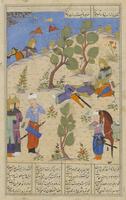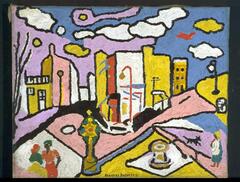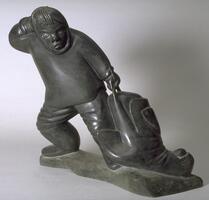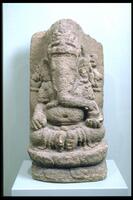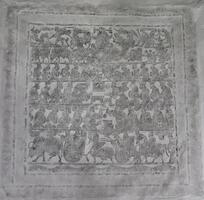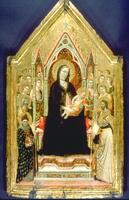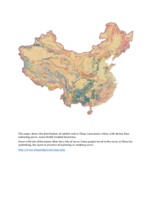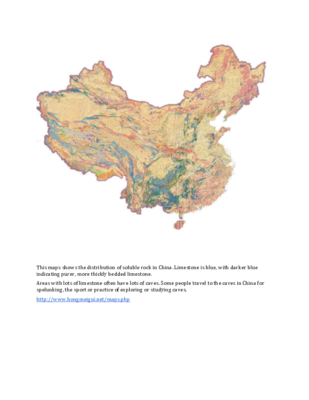Second Grade: Art Rocks! Geology and Art
Docent Curricular Tour
Discussion
Rocks and minerals have distinct properties that can be observed and tested. They also have cultural and symbolic value revealed in the art of many people and time periods. Remember, however, that this tour is for seven years old who are not especially sophisticated thinkers about symbolism, etc. Although you are discussing science, you are still in the museum giving an art tour so don’t feel that you need to be the Einstein of rocks and minerals. At each stop you may discuss the rocks and minerals that make it but also always ask why they artist would choose this material? What interesting properties of this rock would the artist want to use and why?
Science Concept: Rocks and minerals have distinct properties that can be observed and tested; minerals provide many of the resources we use; erosion effects rocks.
Art Concept: Use vocabulary related to materials and process.
Props:
● Flashlight and laser pointer
● A selection of stones used in sculptures (could assemble a “kit” for the docent office)
● Photo of paint in tempra bottles (like school) tubes and water color pans
● Stones used to make pigments
● Sample of pigments
● Gold leaf sample (the gold is pounded til it is very very thin)
Resources/References for Docents
● Rocks: It is easy to find basic information for kids on the web. Don’t have to go to great lengths.
● Good essay on the Casentino on the docent portal, Resources page, search “essay” to find: “Essay - Early Western - Casentino, Madonna and Child”
● The Materials and Techniques of Medieval Painting , by Daniel V. Thompson
● The Craftsman’s Handbook , by Cennino Cennini.
● Fun read: Color: A Natural History of the Palette, by Victoria Finlay
● e-props: iPad Art Rocks tour
Engagement Strategies
● I know that this year you have learned (or are going to learn) about rocks.
● Do you remember the three types of rocks? (igneous, sedimentary, metamorphic)
● Did you know, people have been using rocks, stones and minerals to make art since the beginning of time? Today I thought it would be fun to see how artists use rocks to make art!
● And we are going to start right here. Look around you and tell me if you see anything made of stone.
● The kind of artist that designs a building is called an architect. The architect who designed this museum used lots and lots of stones!! (name them?)
● While we are walking around the museum today, I would like you to point out things that you see that are made from stone.
Stop 1: Nydia
● Let’s look at this piece for a few minutes by walking around it. Put your hands behind you and just walk around the statue.
● What did you notice about the rock? What does it look like? [White and sparkly.]
● Let’s think about why an artist would want to use marble to make a statue of a person.
● Can you see through this stone? No. It seems opaque. But, let’s try to shine light through a thin section of it. You stay here with your hands behind you while I put the flashlight behind Nydia at this point where the stone is very thin. Can you see the light?
● Now I need a volunteer. Let’s look at your hand. Can anyone see through it? No. But, if we put the flashlight up to it, you can see it, just like the marble!
● Now can we see why an artist would want to use marble to make a statue of a person? Because it behaves a little bit like a human body.
● Before we leave, take a quick look at the floor. It is also marble. Is it the same color as Nydia? No. Metamorphic rock is made from other rods the get squished together and heated. The new metamorphic rock takes on the color of the old rock that got gished.
● [when you get to the Modern and Contemporary gallery, compare the green marble of Hepworth’s piece. It is made of green Swedish marble. You might want to use texture as an opening to compare and contrast with Giacometti.]
Prop: sculpture, flashlight and story - sample of marble
Notes on marble:
Metamorphic rocks are created by transforming existing rocks via heat and pressure.
Marble, formed from limestone with heat and pressure over years in the earth's crust. These pressure or forces cause the limestone to change in texture and makeup. The process is called recrystallization. Fossilized materials in the limestone, along with its original carbonate minerals, recrystallize and form large, coarse grains of calcite.
The minerals that result from impurities give marble a wide variety of colors. The purest calcite marble is white in colour. Marble containing hematite are reddish in color. Marble that has limonite is yellow, and marble with serpentine is green in colour.
Marble does not split easily into sheets of equal size and must be mined with care. The rock may shatter if explosives are used. Blocks of marble are mined with channeling machines, which cut grooves and holes in the rock. Miners outline a block of marble with rows of grooves and holes. They then drive wedges into the openings and separate the block from the surrounding rock. The blocks are cut with saws to the desired shape and size.
http://www.mineralszone.com/stones/marble.html
Stop 2: Open storage
● “I spy with my little eye some small figures carved out of black stones”
● Focus on Inuit stone carving soapstone
● relatively soft and easy to carve: see iPad resource
Note on soapstone:
Soapstone is a talc-schist, a type of metamorphic rock. Talc, itself, is also metamorphic. Soapstone is relatively soft because of its high talc content.... Softer grades may feel soapy when touched, hence the name. http://www.ask.com/wiki/Soapstone
Other things to look for on the way…
● in open storage: the case of blue and white ware—discuss cobalt - prized in china
● in the dec arts gallery: the stones on the tiffany doors when you go by (beach stones) (have they ever collected stones on the beach or elsewhere?)
Stop 3: Ganesha
● Do you remember the three types of rocks? (igneous, sedimentary, metamorphic)
● This statue is a figure called Ganesha and he is made out of a rock called andesite. Can you say that with me? … yes.
● Andesite is an igneous rock. Do you remember how igneous rocks are formed?
○ Igneous rocks are formed from the solidification of molten rock material.
● Where can we find molten rock? Yes, in areas where there are volcanoes! That means that Ganesha was probably made in an area where there are lots of volcanoes.
● There are many places in the world with volcanic activity. Can you name some? Those are all areas with volcanoes, yes.
● Ganesha is from an island called Java in a country called Indonesia. Let’s look at a satellite map [attached]. See how the area right around Java is light blue? That means the water is kind of shallow. Just to the west, however, the blue is very dark. That means the water is very deep. This is an area of the ocean called a trench. In fact, some people call this the Java trench.
● It is caused by one tectonic plate sliding over another. In places like this--where one plate collides with another--there are often lots of volcanoes and it is an area where you find igneous rocks.
● The volcanoes in this area usually blow lots of ash in the air, like Vesuvius did, but the molten rock beneath the volcanoes can form igneous rocks.
○ The Java trench is the result of the subduction zone caused by the Indo-Australian plate and the Eurasian plate. As this process of subduction occurs, massive amount of energy is stored and released resulting in very active and powerful seismic activity. One of the most volcanically active on Earth. The plate itself moves at a rate of 70mm per year.
Here is the url for a school website with a quick overview of the plate tectonics of the Java trench: https://sites.google.com/a/apps.hopkinsschools.org/plate-tectonics---regions/home/java-trench
● you could also discuss how rocks erode. Ganesha is all lumpy because of erosion. examples and caves.
● Mention that Ganesha is the “remover of obstacles.” It might be good to have a god who can remove obstacles if you live in an area with lots of volcanic activity.
Stop 4: Queen Mother of the West and rubbing
● Let’s remember those three types of rocks again: metamorphic, sedimentary, igneous.
● This big rock carving is made out of limestone. Does anyone know what kind of rock limestone is? yes, sedimentary!
○ Sedimentary rocks are formed by the accumulation of sediments. Limestone is a rock that is composed primarily of calcium carbonate. It most commonly forms in clear, warm, shallow marine waters. It can form organically from the accumulation of shell, coral, algal and fecal debris. It can also form chemically from the precipitation of calcium carbonate from lake or ocean water. Limestone is used in many ways. Some of the most common are: production of cement, crushed stone and acid neutralization. http://geology.com/rocks/sedimentary-rocks.shtml
● This carving was found in a tomb in China. China has many areas where you can find limestone. Let’s look at this map. It shows the distribution of soluble rock in China. Limestone is blue, with darker blue indicating purer, more thickly bedded limestone.
● Areas with lots of limestone often have lots of caves. Some people travel to the caves in China for spelunking. Can you all say that fun word with me? It means, the sport or practice of exploring or studying caves.
● Remember that you need helpers and a full 5 minutes to do rubbing.
Stop 5: Jacopo del Casentino
Engagement Strategy [thanks to Cathy Hufano for this stop]
● Who can spy rocks in this gallery? (Imposts, relief panels, etc.)
● Settle in front of Casentino
● How many of you have ever made a painting? How many of you have ever made a painting of a person? Who was in the picture you painted?
● What did this artist portray? What is happening in this picture? Does anyone know who this is?
● This is a Christian religious painting. [note Mary, Jesus, 4 saints, 14 angels]
● Who do you think is the most important person in this painting? Why do you think that? [Throne, size] Mary is portrayed as the “Queen of Heaven” [Remember in China – in that religion they had a queen in heaven too! The funeral slab]
Patron
● Did you paint your picture for anyone in particular? Just for fun?
● This artist’s name was Jacopo del Casentino. He was Italian and lived 700 years ago.
● He was commissioned to paint this. Has anyone ever heard the word “commissioned” before? In other words, someone went to him and said, I will pay you to make a beautiful picture of Mary and baby Jesus.
● AND he made this painting for a church or for someone who had a lot of money!! Because he used some of the most expensive materials he could buy!!
Materials
● The artist used very very valuable materials to make this painting.
● Do you see a material that he used that probably cost a lot of money?
Gold
● Paint or leaf?
● Prop – gold leaf laminated [since gold is very expensive, a simple prop could be a piece of aluminum foil. Tell the children that gold foil is even thinner than aluminum foil]
● Where do you see the gold?
● Look at Halos – who wears a halo? [in Christian paintings - a ring of light around the head of a holy person is called a halo]
● What are some of the other colors?
● Point out that the black of Mary’s robe is really blue which has aged. After all – this painting is 700 years old. (the varnish has probably not helped) a flashlight might help??
Paint
● When you made your painting, what materials did you need? [Brush, paint, paper, water]
● What kind of container did your paint come in? - Now we can buy paint in tubes and bottles. (Prop - pictures of different containers of paint, tempra bottles, watercolor blocks and tubes) But when this painting was made – when all the paintings in this room were made, artists had to make their own paint! And guess what they made it from!! ROCKS! And plants and earth and other things found in nature. Even BUGS!!
● How do you get color from a rock?? Any ideas? Ground up, and mixed up with a recipe. Some recipes are easy. But some recipes are really hard and take many days to make a color.
Precious stones
● The most expensive color of all was blue.
● Why is it so costly? For three reasons
1. Because it is made from a gemstone called Lapis Lazuli
2. It came from very far away. There was only one place in the world where they mined this gemstone – The mountains of Afghanistan. (prop: map to show distance from Italy to Afghanistan)
3. It was very difficult to get the blue out of the stone and turn into paint.
● And Casentino chose the most important person of all to wear the expensive blue. Who was the most important person? Yes, Mary, and the color for her blue robe comes from lapis lazuli. I have one here, would you like to see it? (prop - stone)
Process
● First, grind the stone and mix it with some other ingredients (wax and resin), then knead it (with two sticks – because the lye would burn their hands) under a special liquid (lye) until all the blue comes out.
● It takes many days to get all the blue out of the stone. Then they let the liquid dry out and they end up with a blue powder. ( prop - blue pigment)
● The blue powdered pigment is then mixed with something that will hold it together – something that will turn it into paint. To make this blue paint, you will never guess what they mixed the blue powder with to hold it together. An EGG YOLK!
● This kind of paint is called tempra paint (not like the modern tempra paint you use at school – show pic again)
● Look at the colors used in the other paintings next to this or in the gallery. Where do they see blue and gold? Blue and Gold, were the most precious and expensive colors used in the paintings of this time
Closing
Oh yeah. Anyone know the UofM colors?? When they chose those colors do you think they knew what you know now?
If there is time and you still have their attention:
● talk about the wood panel
● the gesso preparation (chalk or alabaster) and application
● the application of gold leaf and gold paint.
● the origin of other pigments
Part of 1 Learning Collection
<p>Docent Curricular Tour</p>
Rate this Resource
AVG: 0 | Ratings: 0
& Author Notes
Creative Commons by-nc-saLast Updated
November 16, 2018 1:21 p.m.Report
Reporting Policy

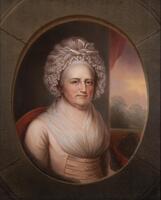
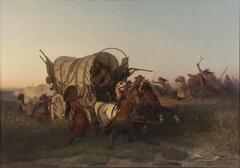
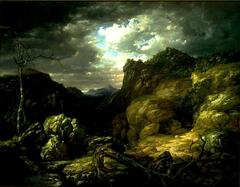
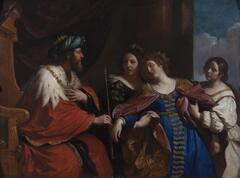

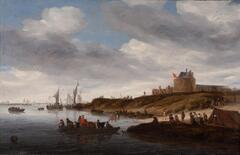

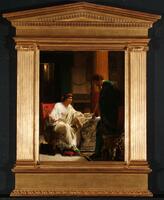
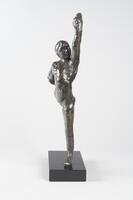
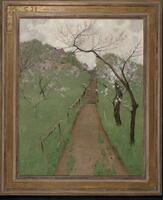
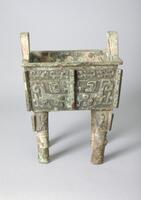
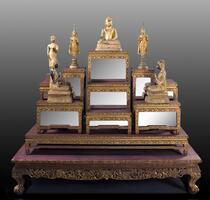
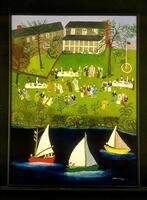
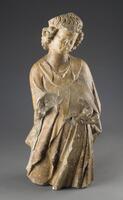
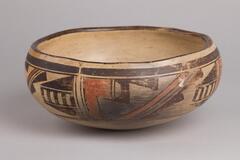
![<p>This celadon bowl is decorated with mold-impressed designs, which was one of popular type of dishes in 11th and 12th centuries. On its inner walls are lotus scroll designs, and on its inner base is what is presumed to be a lotus flower design. Glaze has been applied all the way down to the rim of the foot, which retains traces of silica supports in three places. The yellow-green glaze is evenly spread on the surface, while the clay is of specially selected high quality, producing a smooth surface.<br />
[<em>Korean Collection, University of Michigan Museum of Art</em> (2014) p.111]</p>
<br />
shallow lobed bowl with molded lotus design on wall, 6 lobes, very small foot, high quality, need cleaning <p>This celadon bowl is decorated with mold-impressed designs, which was one of popular type of dishes in 11th and 12th centuries. On its inner walls are lotus scroll designs, and on its inner base is what is presumed to be a lotus flower design. Glaze has been applied all the way down to the rim of the foot, which retains traces of silica supports in three places. The yellow-green glaze is evenly spread on the surface, while the clay is of specially selected high quality, producing a smooth surface.<br />
[<em>Korean Collection, University of Michigan Museum of Art</em> (2014) p.111]</p>
<br />
shallow lobed bowl with molded lotus design on wall, 6 lobes, very small foot, high quality, need cleaning](/media/W1siZiIsIjIwMjIvMDkvMjQvMmx1M2ptNHMzM19kZWZhdWx0LmpwZyJdLFsicCIsInRodW1iIiwiMjQweDIwMCJdXQ?sha=2ba2ecc35e4531c3)
